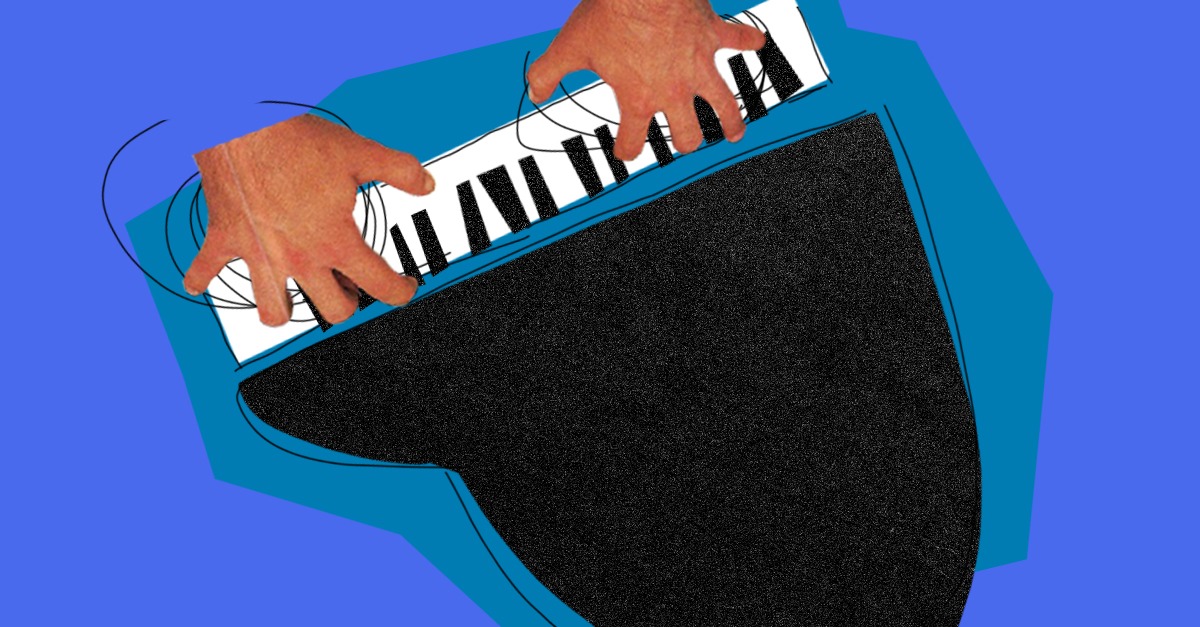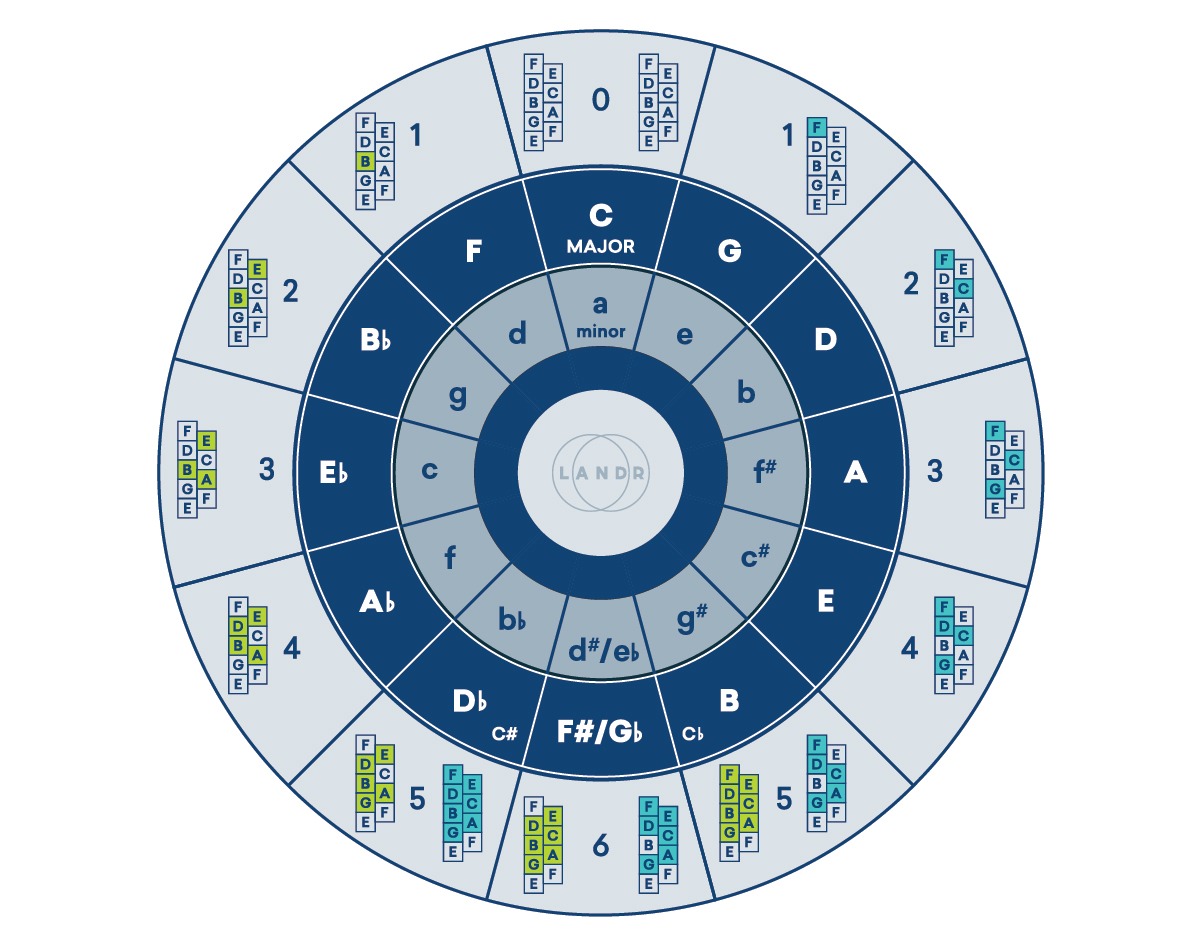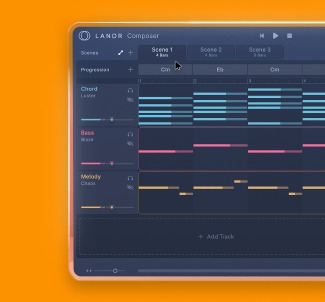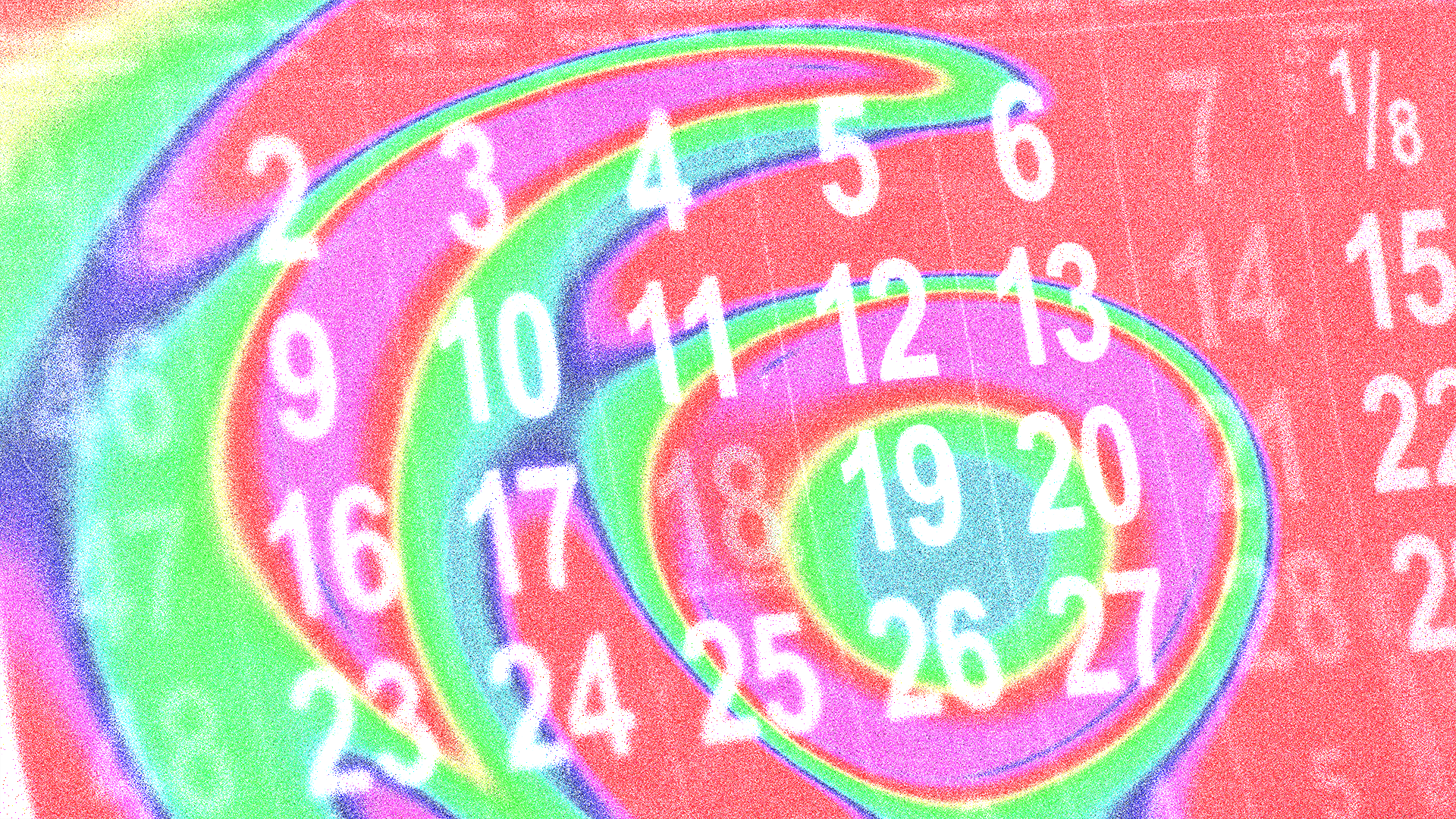
8 Jazz Chord Progressions Every Musician Should Know

Jazz chord progressions may seem complex.
Seventh chords, extended harmony, and voicings can be difficult to grasp.
But once you’re familiar with triads and basic chord progressions, jazz harmony will be completely approachable.
Knowing the most common jazz chord progressions will open your ears. You’ll begin to notice them in many different types of genres, especially hip-hop and lo-fi.
That’s why I’ll be listing the most common jazz chord progressions you should know.
Knowing these chord progressions will provide a solid foundation to start exploring the world of jazz.
I’ll be listing all the chord progressions with their roman numerals and chord symbols in the key of C major.
Why learn jazz chord progressions?
Even if jazz isn’t your main genre, learning these progressions will help you expand your musical vocabulary.
If you’re feeling stuck in a creative rut with your songwriting, learning new concepts from music theory is one of the quickest ways to break through.
On top of that, modern genres like R&B and neo-soul have deep musical roots in the harmonic and melodic traditions of jazz.
Modern genres like R&B and neo-soul have deep musical roots in the harmonic and melodic traditions of jazz.
Once you learn a few jazz progressions you’ll start to see how these timeless patterns are essential learning for musicians.
As a bonus, we’ve made a MIDI pack of these exact chord progressions, so if you’re into that kind of thing you can just drag and drop them into your DAW and start writing jazz chords right now.
The 8 best jazz chord progressions
With that out of the way, here are the eight best jazz chord progressions to learn as a beginner.
Two Five One
You’ll find the two five one progression in almost every jazz song. It’s a cadential staple of the genre. It’s often used to take the music to different tonal centers, or complete a phrase in a turnaround.
1. Major Two Five One: ii – V7 – I
The major two five one uses the second and fifth chords from it’s major key.
Miles Davis’ composition “Tune-up” is a perfect example of using the two five one to reach different tonal centers.
The harmony throughout the song changes to the keys of D major, C major, and B flat major by using their related two five one progressions.

Diatonic chord notation for the major 2-5-1
2. Minor Two Five One: ii – V – i
You’ll find the two five one progression in almost every jazz song.
The minor two five one is like the major, except that the chords come from the minor scale.
As a result, you’ll often find that the two chord has a flattened fifth, and the five chord a flattened ninth.
The beautiful jazz standard “Alone Together” written by Howard Dietz and Arthur Schwartz uses minor two five one progressions throughout its whole form.
It’s even used to return to the parallel major key at the end of the A section. The parallel major key in this tune is D major.

Diationic chord notation for the minor 2-5-1 chord progression.
Jazz Turnaround
The jazz turnaround is an extension of the two five one. It’s commonly found at the end of sections in songs to punctuate the ending.
Whole songs are also based around the turnaround. There’s a type of form in jazz that many songs use called ‘Rhythm changes’. It uses the turnaround for its A sections. ‘
Rhythm changes’ originated from George Gershwin’s tune “I’ve Got Rhythm.”
‘Rhythm changes’ originated from George Gershwin’s tune “I’ve Got Rhythm.”
3. Major Turnaround: I vi ii V I
Like the two five one progression, the chords in the turnaround come from the home key.
The burnin’ tune “Oleo” by Sonny Rollins is a popular ‘Rhythm Changes’ song. Those chords go by faster than you can count them.

Diatonic chord notation for a major turnaround chord progression in jazz and gospel music.
4. Minor Turnaround: i VI ii V i
The minor turnaround is like the minor two five one, and the major turnaround.
The difference here is that the VI chord is now a major chord. It’s taken from the minor key. In the case of C minor, you’ll have an Ab major 7 chord.

Diatonic notation for a minor turnaround in jazz and gospel music.
Dominant Progressions
Chord progressions don’t always have to stay in the same key. In jazz, dominant chords can lead to closely related keys.
They can also exist all on their own, moving the harmony away from any sense of a tonal center.
5. Secondary Dominant: I – V/ii – ii – V – I
Secondary dominants are chords from outside the home key that are related to chords in a progression by a V-I relationship.
Using secondary dominants will take the music to a different key momentarily, before returning to the home key.
They’re great for creating some unexpectedness in your chord progressions.
In this example, we have an A7 chord, which happens to be the five chord of D minor.
Right before the B section of Duke Ellingtons ‘Take the A Train’, you’ll find a secondary dominant that makes a seamless transition between sections A and B.
This takes the harmony from C major, to the closely related key of F major.

Ditonic notation for a classic secondary dominant chord progression commonly used in jazz and gospel music.
6. Passing Diminished Chord: I – #Io7 – ii – V
Passing diminished chords help transition from one chord to another. They do this by using a chromatic movement in the bass.
Passing diminished chords help transition from one chord to another.
Most diminished chords serve a dominant function. In this example the C# diminished isn’t too different from the secondary dominant A7.
If you take an inventory of notes for both chords you’ll see that they’re very similar.
A7: A C# E G
C#dim7: C# E G A#
You’ll find this chord progression in the beginning of the popular jazz standard ‘Have you met Miss Jones?’

Diatonic notation for a C major chord progression using a C# diminished 7 passing chord.
7. Circle of Fifths Progression
The circle of fifths progression is when each chord will flow through the circle of fifths in ascending fourths, or descending fifths.
In this progression, the chords remain dominant and will cycle through the circle.

The bridge in the ‘Rhythm Changes’ form uses the circle of fifths progression. You can hear the cyclic harmony in Charlie Parker’s bebop lines:
8. 12 Bar Blues
The jazz blues is another chord progression that only uses dominant chords.
The jazz blues is another chord progression that only uses dominant chords.
It’s known to include many chord substitutions based around the skeleton form shown above. The flat 7 on each chord contributes to that bluesy sound.
This is why using the blues scale to improvise works extremely well with the jazz blues.

Chord notation of a C major blues chord progression using dominant chords.
Play the changes
Jazz is a whole other world when it comes to music.
The harmony can get complex, and improvising doesn’t come easily.
But knowing these progressions will give you the solid foundation you need to start learning.
Practice these chord progressions in three musical keys. Practice them through all twelve keys using the circle of fifths if you’re feeling ambitious!
Gear guides, tips, tutorials, inspiration and more—delivered weekly.
Keep up with the LANDR Blog.






